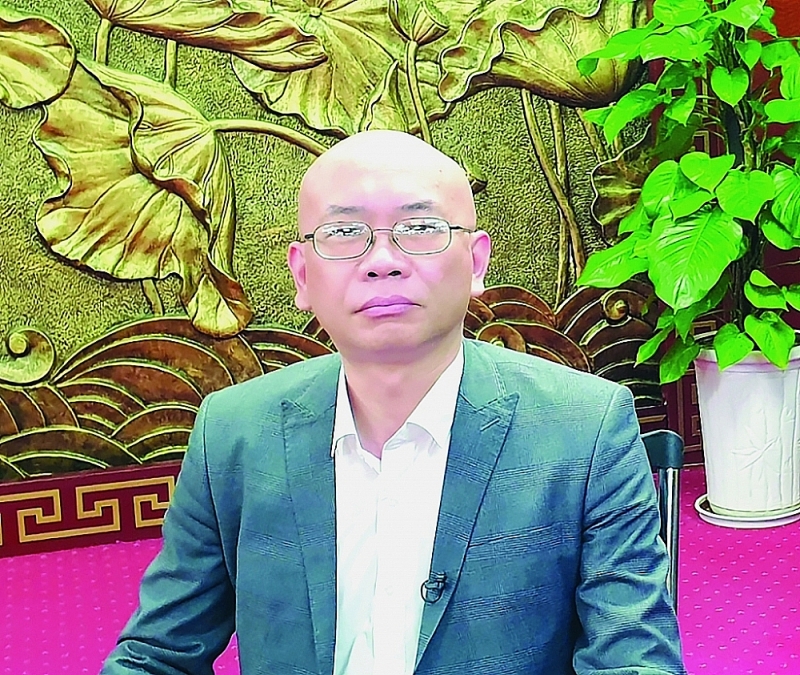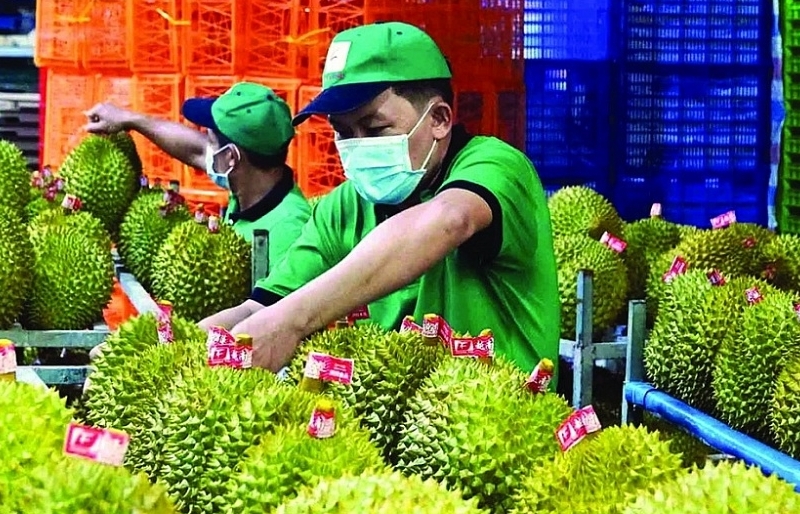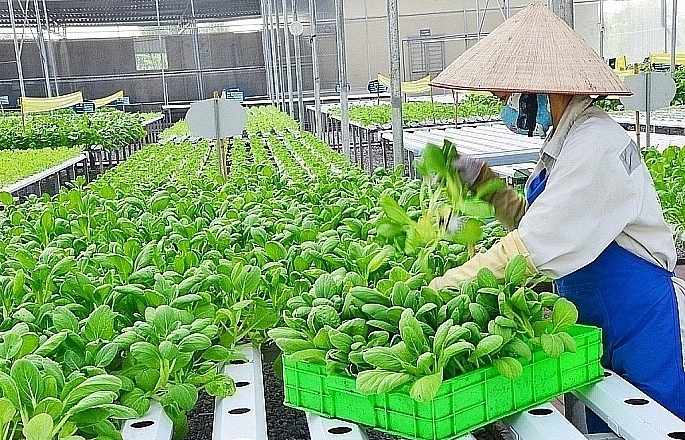Vietnam continues to be favorable location for the convergence of supply chains
 |
| Tran Thanh Hai, Deputy Director of the Import-Export Department (Ministry of Industry and Trade). |
How do you assess the impacts of the pandemic on industrial products with great export value such as textiles, garments, and footwear during the social distancing period in southern provinces and cities recently and as localities gradually reopen their economies?
Textile and garment, leather and footwear have contributed greatly to Vietnam’s export turnover. The position of these Vietnam’s industries in the global supply chain was confirmed when Vietnam became the second largest leather and footwear exporter and is in the top five largest textile and garment exporting countries in the world.
Both these industries are very labor intensive. Recently, restricting movement to prevent the pandemic has affected workers. Anti-pandemic measures including social distancing have caused a great "shock" for both businesses and workers. Businesses were worried that they could not guarantee orders, had to pay extra costs for anti-pandemic measures when applying "the three on-site" and "one route, two destinations" models. And employees were worried about their health and safety.
After the social distancing, those concerns are still not over, workers are continuing to move long distances from production centers to their hometowns. All that sets the mind and responsibilities for management agencies at both central and local levels.
| Nguyen Van Binh, Director of the Legal Department (Ministry of Labour, Invalids and Social Affairs): Submitting to the Government to allow employees to flexibly work overtime The Ministry of Labor, Invalids and Social Affairs has proposed to be more flexible in allowing employees to work overtime. First, the ceiling of monthly overtime, which is not more than 40 hours/month, is not applied. Second, the annual ceiling of 300 hours/year for some fields and industries will be proposed to apply to all industries. Additionally, the Ministry is developing a master plan to restore the labor market after the pandemic, including ensuring the labor supply to meet requirements. Hundreds of thousands of workers have left to their hometowns after the pandemic. The Ministry of Labor, War Invalids and Social Affairs proposed to apply the Covid-19 "green card" to employees. Moreover, the current conditions for reopening production are too complicated and costly. Safety is essential, but some conditions need to be reviewed. For example, weekly Covid-19 testing for businesses applying "the three on-site" model is wasteful, incurring costs for businesses. Besides, there is no difference for workers who have already been vaccinated. Uyen Nhu (recorded) |
Vietnam’s current anti-pandemic model has shifted from centralized to decentralized. Can you analyze further the advantages of this model in facilitating enterprises to quickly start production? Do you have any advice for them to maximize efficiency from this model?
The shift from the centralized to decentralized model makes it easier for businesses because the units that meet these conditions can maintain production.
The anti-pandemic centralized model means that in the past, anti-pandemic measures were mainly government measures, for example, centralized isolation and treatment. The social distancing measures were implemented with little choice for businesses.
Currently, this model has changed, bringing the rights and responsibilities of the subjects to a higher level. For example, enterprises themselves take care of ensuring epidemiological safety conditions, ensuring the health of their employees; giving businesses the right to self-test and self-apply pandemic prevention and control measures.
Previously, the fact that enterprises could find vaccines on their own has also been confirmed. If businesses can actively find a source of vaccines or medicines, they can use them for their employees.
Recently, the mobile medical station model has been applied very well to reduce the load on centralized medical facilities such as hospitals. The health system of wards and communes has done a very good job of supporting F0 and F1 cases to isolate at home. This model will also be applied in enterprises.
Accordingly, businesses will have to build facilities such as health rooms to guide workers in taking preventive measures. This will be the on-site force to deal with the pandemic when problems occur, thereby ensuring production activities. This will avoid the situation that there is only one F0 case, but thousands of workers have to leave work, the enterprise has to close, causing disruption to the supply chain.
Localities are still applying different regulations in allowing businesses to resume operations after the lockdown as well as allowing workers to move. This makes it difficult for the business community to quickly restore production. In your opinion, what solutions are needed to solve this problem in the future?
The government is taking measures to ensure disease safety, such as continuing to vaccinate, mobilizing sources to get more vaccines, even accessing drugs to treat Covid-19. The fastest way to reopen is by removing barriers and measures that have caused supply chain disruptions, mainly the movement of workers.
However, localities are still adopting different measures to allow workers to move. It is reported that HCM City must negotiate with each neighboring province to allow workers to move. If the Government can have a general document that sets out certain criteria, stipulating that meeting those criteria, workers are allowed to move, without restrictions on geographical boundaries of provinces, it will be much more convenient.
Based on these criteria, localities can see if they have met them or not. Localities are required to perform the documents synchronously. As far as I know, the Government is considering making such regulations, creating favorable conditions for localities, businesses, and employees.
What message do you want to send to international brands and businesses, especially the typical processing and manufacturing industries such as textiles, leather, and footwear, to strengthen their confidence in restoring production in Vietnam?
For international brands, businesses, and associations, I would like to affirm that Vietnam continues to be a favorable location for the convergence of supply chains.
On one hand, Vietnam has favorable factors in terms of geography, labor, and reasonable inputs.
On the other hand, the supply chain in the field of textiles, leather, and footwear is established deeply in Vietnam. Therefore, calling on brands to trust the Vietnamese government, associations, and enterprises. Vietnam has made efforts to overcome difficulties, gradually restoring production activities, thereby helping businesses and brands to maintain and expand production in the future.
Thank you, sir!
Related News

Promoting agricultural exports to the Japanese market
13:55 | 22/12/2024 Import-Export
Latest News

Nghệ An Province anticipates record FDI amidst economic upswing
15:49 | 26/12/2024 Import-Export

Green farming development needs supportive policies to attract investors
15:46 | 26/12/2024 Import-Export

Vietnamese enterprises adapt to green logistics trend
15:43 | 26/12/2024 Import-Export

Paving the way for Vietnamese agricultural products in China
11:08 | 26/12/2024 Import-Export
More News

VN seafood export surpass 2024 goal of $10 billion
14:59 | 25/12/2024 Import-Export

Exporters urged to actively prepare for trade defence investigation risks when exporting to the UK
14:57 | 25/12/2024 Import-Export

Electronic imports exceed $100 billion
14:55 | 25/12/2024 Import-Export

Forestry exports set a record of $17.3 billion
14:49 | 25/12/2024 Import-Export

Hanoi: Maximum support for affiliating production and sustainable consumption of agricultural products
09:43 | 25/12/2024 Import-Export

Việt Nam boosts supporting industries with development programmes
13:56 | 24/12/2024 Import-Export

VN's wood industry sees chances and challenges from US new trade policies
13:54 | 24/12/2024 Import-Export

Vietnam's fruit, vegetable exports reach new milestone, topping 7 billion USD
13:49 | 24/12/2024 Import-Export

Aquatic exports hit 10 billion USD
13:45 | 24/12/2024 Import-Export
Your care

Nghệ An Province anticipates record FDI amidst economic upswing
15:49 | 26/12/2024 Import-Export

Green farming development needs supportive policies to attract investors
15:46 | 26/12/2024 Import-Export

Vietnamese enterprises adapt to green logistics trend
15:43 | 26/12/2024 Import-Export

Paving the way for Vietnamese agricultural products in China
11:08 | 26/12/2024 Import-Export

VN seafood export surpass 2024 goal of $10 billion
14:59 | 25/12/2024 Import-Export





